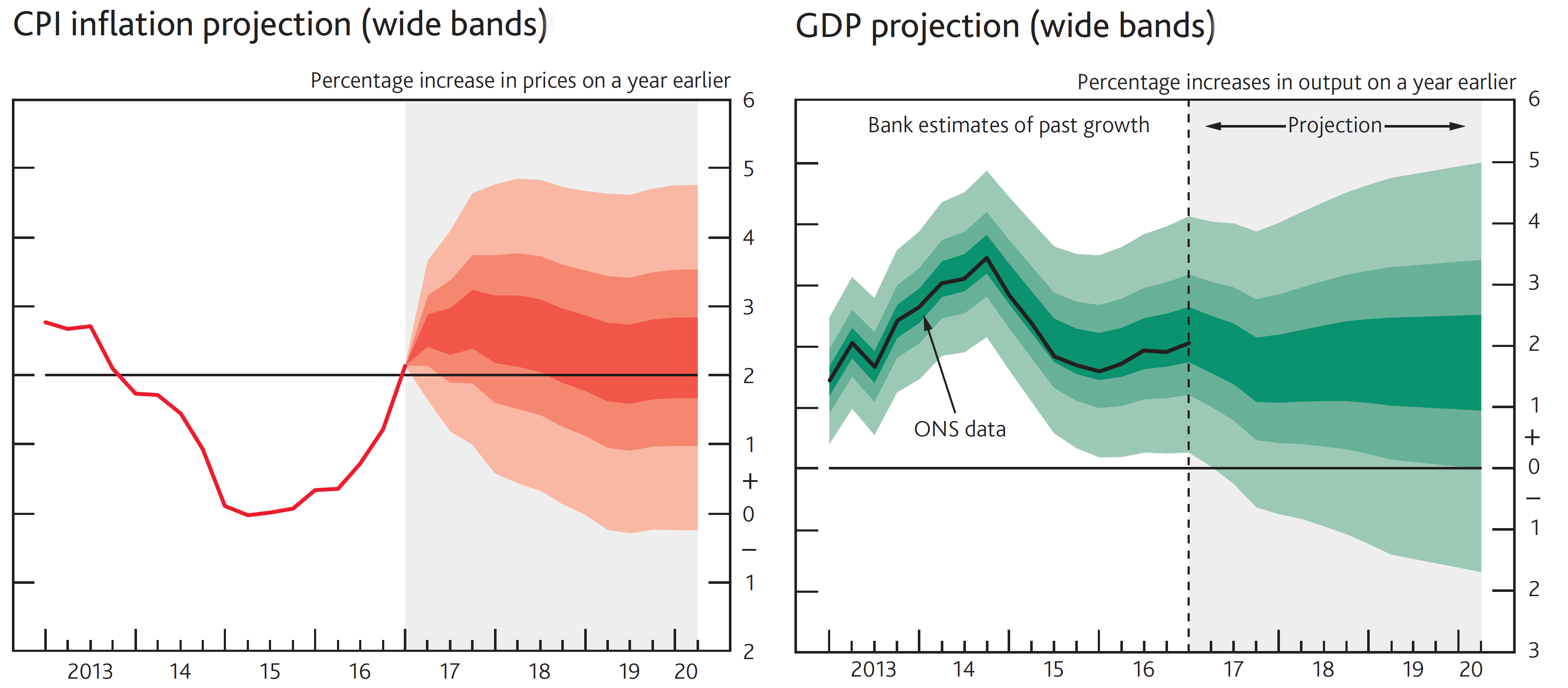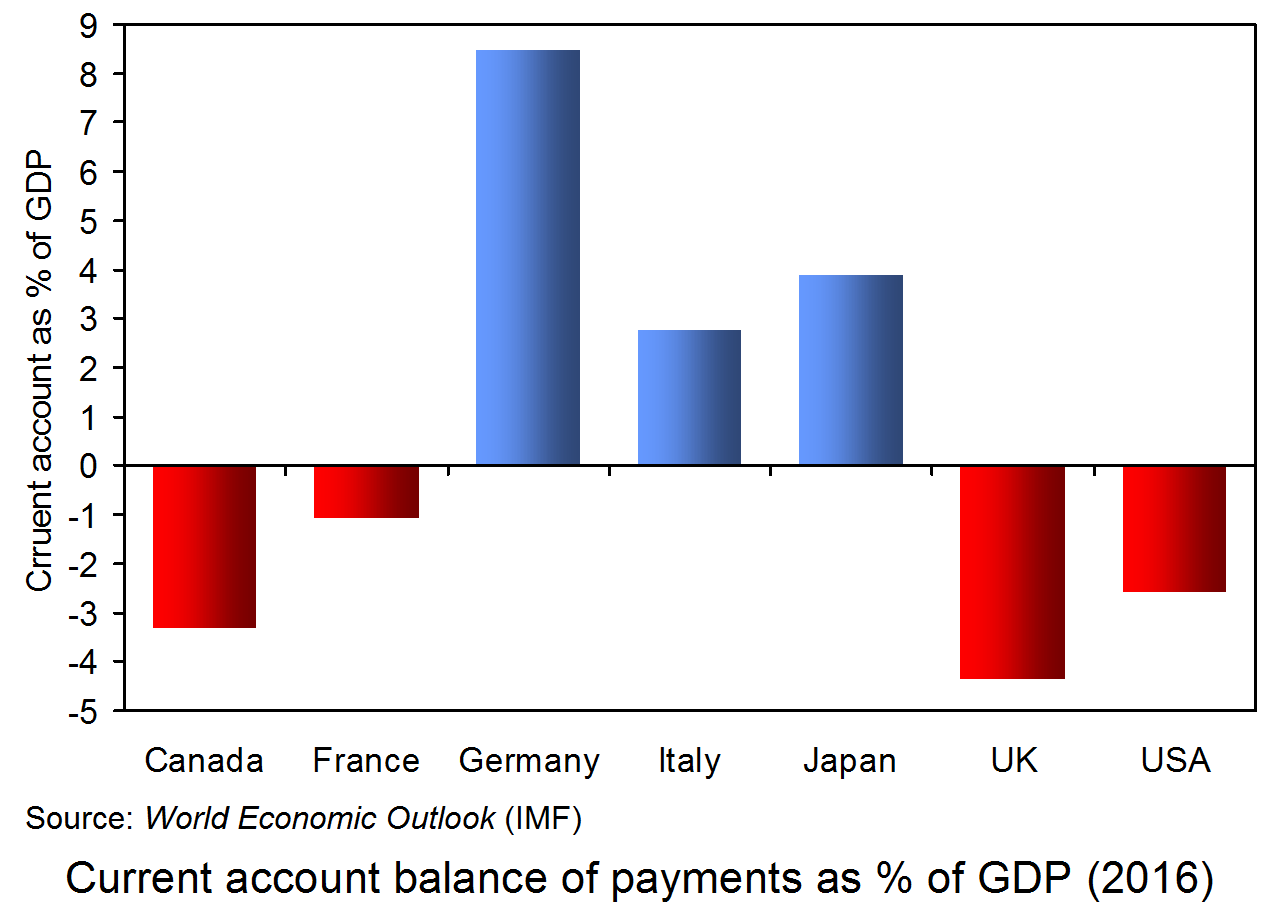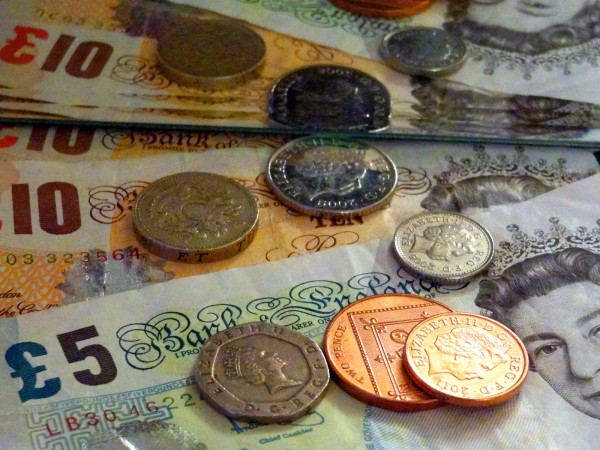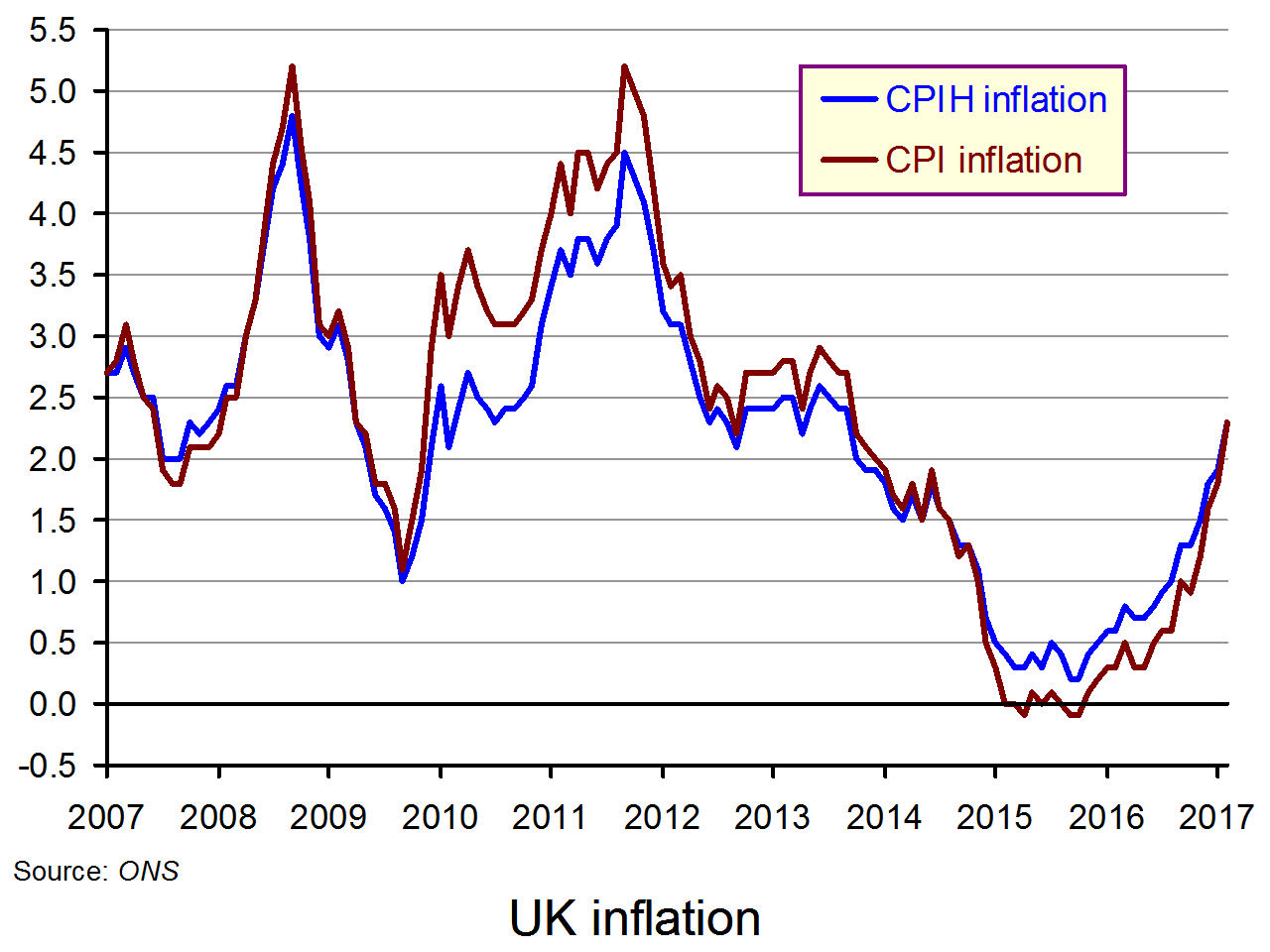 According to a new report, Time for Change published by the Institute for Public Policy Research (IPPR), ‘The British economic model needs fundamental reform.’
According to a new report, Time for Change published by the Institute for Public Policy Research (IPPR), ‘The British economic model needs fundamental reform.’
It is no longer generating rising earnings for a majority of the population, and young people today are set to be poorer than their parents. Beneath its headlines figures, the economy is suffering from deep and longstanding weaknesses, which make it unfit to face the challenges of the 2020s.
The report by the IPPR’s Commission on Economic Justice is an interim one, with the final report due in the latter part of next year. The commission was set up in 2016 and includes business leaders, such as the heads of John Lewis and Siemens, the TUC General Secretary, the Archbishop of Canterbury and other leading figures.
Commenting on the interim report, Justin Welby, the Archbishop of Canterbury said
Our economic model is broken. Britain stands at a watershed moment where we need to make fundamental choices about the sort of economy we need. We are failing those who will grow up into a world where the gap between the richest and poorest parts of the country is significant and destabilising
The report found that wages have stagnated for the majority of the population since the financial crisis of 2007/8. Wage income has fallen as a proportion of national income, while the proportions going to income from profits and property have risen. Young people are poorer than previous generations of young people.
Despite low unemployment, many people are on zero-hour contracts, part-time contracts or employed on a casual basis. For many, their jobs are insecure and they have no bargaining power.
 The UK for many years has had a lower rate of investment that other developed economies and productivity, in terms of output per hour, is the lowest of its major competitors. Productivity in Germany is 36% higher than in the UK; in France and the USA it is 29% higher. Although there are some internationally competitive UK firms with high productivity, the country has:
The UK for many years has had a lower rate of investment that other developed economies and productivity, in terms of output per hour, is the lowest of its major competitors. Productivity in Germany is 36% higher than in the UK; in France and the USA it is 29% higher. Although there are some internationally competitive UK firms with high productivity, the country has:
a longer ‘tail’ of low-productivity businesses, in which weak management and poor use of skills leads to ‘bad jobs’ and low wages.
There are many other challenges, including an ageing population, uncertainties from Brexit, a large current account deficit, increased competition from abroad and growth once more in private-sector debt, which means that consumption may cease to be the main driver of economic growth as people seek to curb their borrowing.
The report is also critical of fiscal policy, which with record low interest rates could have been used to finance infrastructure projects as well as supporting public services.
The report recommends three approaches:
The first is institutional reform to support investment.
The second is making the economy more competitive through a coherent industrial strategy, reform of the financial sector to support long-term investment, reform of corporate governance to promote business success and tackling the market dominance of companies such as Amazon and Google.
The third is to bring greater social justice and equality through encouraging more secure and better-paid jobs, strengthening trades unions and reforming the tax system to make it fairer and smarter.
Not surprisingly the government has defended its record of reducing debt, presiding over falling unemployment and reduced inequality as measured by a reduced Gini coefficient. However, there has only been a modest fall in the Gini coefficient, from 0.333 in 2009/10 to 0.315 in 2016/7, and this has largely been the result of the very rich seeing a decline in income from assets.
Articles
Britain’s economy is broken and failing to tackle inequality, says major new report Independent, Ben Chu (6/9/17)
UK’s economic model is broken, says Archbishop of Canterbury The Guardian, Phillip Inman (5/9/17)
Tax wealth or see the UK tear itself apart, Cable will warn Bloomberg, Alex Morales and Thomas Penny (6/9/17)
Archbishop of Canterbury calls for radical economic reform BBC News (5/9/17)
Archbishop warns economy is “broken” as report reveals longest period of wage stagnation for 150 years Huffington Post, Rachel Wearmouth (6/9/17)
Britain’s economy is broken. We desperately need new ideas The Guardian, Tom Kibasi (4/6/17)
Carney: Britain is in the ‘first lost decade since the 1860s’, Business Insider, Oscar Williams-Grut (6/12/16)
Our broken economy, in one simple chart New York Times, David Leonhardt (7/8/16)
Report
Time for Change: A new Vision for the British Economy IPPR Commission on Economic Justice (6/9/17)
Questions
- Why have wages for the majority of the UK population stagnated for the past 10 years?
- Why is productivity in the UK lower than in most other developed economies?
- Is it possible for poor people to become poorer and yet for the Gini coefficient to fall?
- What institutional reforms would you suggest to encourage greater investment?
- Explain the possible advantages and disadvantages of abandoning ‘austerity policy’ and adopting a more expansionist fiscal stance?
- Does it matter that Amazon and Google are dominant players in their respective markets? Explain.
 With the effects of the depreciation of sterling feeding through into higher prices, so the rate of inflation has risen. The latest figures from the ONS show that in the year to April 2017, CPI inflation was 2.7% – up from 2.3% in the year to March. The largest contributors to higher prices were transport costs and housing and household services.
With the effects of the depreciation of sterling feeding through into higher prices, so the rate of inflation has risen. The latest figures from the ONS show that in the year to April 2017, CPI inflation was 2.7% – up from 2.3% in the year to March. The largest contributors to higher prices were transport costs and housing and household services.
But wage increases are not keeping up with price increases. In 2017 Q1, the average annual growth rate in regular pay (i.e. excluding bonuses) was 2.1%. In other words, real pay is falling. And this is despite the fact that the unemployment rate, at 4.6%, is the lowest since 1975.
The fall in real wages is likely to act as a brake on consumption and the resulting dampening of aggregate demand could result in lower economic growth. On the other hand, the more buoyant world economy, plus the lower sterling exchange rate is helping to boost exports and investment and this could go some way to offsetting the effects on consumption. As Mark Carney stated in his introductory remarks to the May 2017 Bank of England Inflation Report:
The combination of the stronger global outlook and sterling’s past depreciation is likely to support UK net trade. And together with somewhat lower uncertainty, stronger global growth is also likely to encourage investment as exporters renew and increase capacity.
According to the Bank of England, the net effect will be modest economic growth, despite the fall in real wages.
In the MPC’s central forecast, quarterly growth is forecast to stabilise around its current rate, resulting in growth of 1.9% in 2017 and around 1¾% in each of the next two years.
 But forecasting is dependent on a range of assumptions, not least of which are assumptions about consumer and business expectations. These, in turn, depend on a whole range of factors, such as the outcome of the UK election, the Brexit negotiations, commodity prices, world growth rates and international events, such as the actions of Donald Trump. Because of the uncertainty surrounding forecasts, the Bank of England uses fan charts. In the two fan charts illustrated below (from the May 2017 Inflation Report), the bands on constructed on the following assumptions:
But forecasting is dependent on a range of assumptions, not least of which are assumptions about consumer and business expectations. These, in turn, depend on a whole range of factors, such as the outcome of the UK election, the Brexit negotiations, commodity prices, world growth rates and international events, such as the actions of Donald Trump. Because of the uncertainty surrounding forecasts, the Bank of England uses fan charts. In the two fan charts illustrated below (from the May 2017 Inflation Report), the bands on constructed on the following assumptions:
If economic circumstances identical to today’s were to prevail on 100 occasions, the MPC’s best collective judgement is that CPI inflation or the mature estimate of GDP growth would lie within the darkest central band on only 30 of those occasions and within each pair of the lighter coloured areas on 30 occasions.

The charts and tables showing the May 2017 projections have been conditioned on the assumptions that the stock of purchased gilts remains at £435 billion and the stock of purchased corporate bonds remains at £10 billion throughout the forecast period, and on the Term Funding Scheme (TFS); all three of which are financed by the issuance of central bank reserves. They have also been conditioned on market interest rates, unless otherwise stated.
The wider the fan, the greater the degree of uncertainty. These fan charts are wide by historical standards, reflecting the particularly uncertain future for the UK economy.
But one thing is clear from the latest data: real incomes are falling. This is likely to dampen consumer spending, but just how much this will impact on aggregate demand over the coming months remains to be seen.
Articles
UK real wages drop for first time in three years Financial Times, Sarah O’Connor (17/5/17)
Bank of England warns Brexit vote will damage living standards The Guardian, Katie Allen (11/5/17)
UK wage growth lags inflation for first time since mid-2014 BBC News (17/5/17)
Britons’ Falling Real Wages Show Challenging Times Have Arrived Bloomberg, Scott Hamilton and Lucy Meakin (17/5/17)
Jobs market will suffer a Brexit slowdown, say experts The Guardian, Angela Monaghan and Phillip Inman (15/5/17)
Pay will continue to be squeezed, employers’ survey suggests BBC News, Kamal Ahmed (15/5/17)
Brexit latest: Real wages falling, Office for National Statistics reveals Independent, Ben Chu (17/5/17)
UK inflation climbs to four-year high, beating forecasts Financial Times, Gavin Jackson (16/5/17)
Why is UK inflation at a four-year high? Financial Times, Gavin Jackson (19/5/17)
A blip, or a test of hawks’ patience? Economists respond to high UK inflation data Financial Times, Nicholas Megaw (16/5/17)
UK inflation rate at highest level since September 2013 BBC News (16/5/17)
Inflation jumps to its highest level since 2013 as Brexit continues to bite Business Insider, Will Martin (16/5/17)
UK GDP growth weaker than expected as inflation hits spending The Guardian, Katie Allen (25/5/17)
UK economic growth estimate revised down BBC News (25/5/17)
Reports
Inflation Report, May 2017 Bank of England (11/5/17)
Labour Market Outlook, Sping 2017 Chartered Institute of Personnel and Development (May 2017)
Data
Statistical Interactive Database – interest & exchange rates data Bank of England
Inflation and price indices ONS
Earnings and working hours ONS
Second estimate of GDP: Jan to Mar 2017 ONS Statistical Bulletin (25/5/17)
Questions
- Find out what has happened to the dollar/sterling and the euro/sterling exchange rate and the sterling exchange rate index over the past 24 months. Plot the data on a graph.
- Explain the changes in these exchange rates.
- Why is there negative real wage growth in the UK when the rate of unemployment is the lowest it’s been for more than 40 years?
- Find out what proportion of aggregate demand is accounted for by household consumption. Why is this significant in understanding the likely drivers of economic growth over the coming months?
- Why is uncertainty over future UK growth rates relatively high at present?
- Why is inflation likely to peak later this year and then fall?
- What determines the size and shape of the fan in a fan chart?
 One of President Trump’s main policy slogans has been ‘America first’. As Trump sees it, a manifestation of a country’s economic strength is its current account balance. He would love the USA to have a current account surplus. As it is, it has the largest current account deficit in the world (in absolute terms) of $481 billion in 2016 or 2.6% of GDP. This compares with the UK’s $115bn or 4.4% of GDP. Germany, by contrast, had a surplus in 2016 of $294bn or 8.5% of GDP.
One of President Trump’s main policy slogans has been ‘America first’. As Trump sees it, a manifestation of a country’s economic strength is its current account balance. He would love the USA to have a current account surplus. As it is, it has the largest current account deficit in the world (in absolute terms) of $481 billion in 2016 or 2.6% of GDP. This compares with the UK’s $115bn or 4.4% of GDP. Germany, by contrast, had a surplus in 2016 of $294bn or 8.5% of GDP.
However, he looks at other countries’ current account surpluses suspiciously – they may be a sign, he suspects, of ‘unfair play’. Germany’s surplus of over $50bn with the USA is particularly in his sights. Back in January, as President-elect, he threatened to put a 35% tariff on imports of German cars.
In practice, Germany is governed by eurozone rules, which prevent it from subsidising exports. And it does not have its own currency to manipulate. What is more, it is relatively open to imports from the USA. The EU imposes an average tariff of just 3% on US imports and importers also have to add VAT (19% in the case of Germany) to make them comparably priced with goods produced within the EU.
 So why does Germany have such a large current account surplus? The article below explores the question and dismisses the claim that it’s the result of currency manipulation or discrimination against imports. The article states that the reason for the German surplus is that:
So why does Germany have such a large current account surplus? The article below explores the question and dismisses the claim that it’s the result of currency manipulation or discrimination against imports. The article states that the reason for the German surplus is that:
… it saves more than it invests. The correspondence of savings minus investment with exports minus imports is not an economic theory; it’s an accounting identity. Germans collectively spend less than they produce, and the difference necessarily shows up as net exports.
But why do the Germans save so much? The answer given is that, with an aging population, Germans are sensibly saving now to support themselves in old age. If Germany were to reduce its current account surplus, this would entail either the government reducing its budget surplus, or people reducing the amount they save, or some combination of the two. This is because a current account surplus, which consists of exports and other incomes from abroad (X) minus imports and any other income flowing abroad (M), must equal the surplus of saving (S) plus taxation (T) over investment (I) plus government expenditure (G). In terms of withdrawals and injections, given that:
I + G + X = S + T + M
 then, rearranging the terms,
then, rearranging the terms,
X – M = (S + T) – (I + G).
If German people are reluctant to reduce the amount they save, then an alternative is for the German government to reduce taxation or increase government expenditure. In the run-up to the forthcoming election on 24 September, Chancellor Merkel’s centre-right CDU party advocates cutting taxes, while the main opposition party, the SPD, advocates increasing government expenditure, especially on infrastructure. The article considers the arguments for these two approaches.
Article
The German economy is unbalanced – but Trump has the wrong answer The Guardian, Barry Eichengreen (12/5/17)
Data
German economic data (in English) Statistisches Bundesamt (Federal Statistical Office)
World Economic Outlook Databases IMF
Questions
- Why does Germany have such a large current account surplus?
- What are the costs and benefits to Germany of having a large current account surplus?
- What is meant by ‘mercantilism’? Why is its justification fallacious?
- If Germany had its own currency, would it be a good idea for it to let that currency appreciate?
- What are meant by ‘resource crowding out’ and ‘financial crowding out’? Why might the policies of tax cuts advocated by the CDU result in crowding out? What form would it take and why?
- Compare the relative benefits of the policies advocated by the CDU and SPD to reduce Germany’s budget surplus.
- Would other countries, such as the USA, benefit from a reduction in Germany’s current account surplus?
- Is what ways would the USA gain and lose from restricting imports from Germany? Would it be a net gain or loss? Explain.
 The latest figures from the ONS show that UK inflation rose to 2.3% for the 12 months to February 2017 – up from 1.9% for the 12 months to January. The rate is the highest since September 2013 and has steadily increased since late 2015.
The latest figures from the ONS show that UK inflation rose to 2.3% for the 12 months to February 2017 – up from 1.9% for the 12 months to January. The rate is the highest since September 2013 and has steadily increased since late 2015.
The main price index used to measure inflation is now CPIH, as opposed to CPI. CPIH is the consumer prices index (CPI) adjusted for housing costs and is thus a more realsitic measure of the cost pressures facing households. As the ONS states:
CPIH extends the consumer prices index (CPI) to include a measure of the costs associated with owning, maintaining and living in one’s own home, known as owner occupiers’ housing costs (OOH), along with Council Tax. Both of these are significant expenses for many households and are not included in the CPI.
But why has inflation risen so significantly? There are a number of reasons.
 The first is a rise in transport costs (contributing 0.15 percentage points to the overall inflation rate increase of 0.4 percentage points). Fuel prices rose especially rapidly, reflecting both the rise in the dollar price of oil and the depreciation of the pound. In February 2016 the oil price was $32.18; in February 2017 it was $54.87 – a rise of 70.5%. In February 2016 the exchange rate was £1 = $1.43; in February 2017 it was £1 = $1.25 – a depreciation of 12.6%.
The first is a rise in transport costs (contributing 0.15 percentage points to the overall inflation rate increase of 0.4 percentage points). Fuel prices rose especially rapidly, reflecting both the rise in the dollar price of oil and the depreciation of the pound. In February 2016 the oil price was $32.18; in February 2017 it was $54.87 – a rise of 70.5%. In February 2016 the exchange rate was £1 = $1.43; in February 2017 it was £1 = $1.25 – a depreciation of 12.6%.
The second biggest contributor to the rise in inflation was recreation and culture (contributing 0.08 percentage points). A wide range of items in this sector, including both goods and services, rose in price. ‘Notably, the price of personal computers (including laptops and tablets) increased by 2.3% between January 2017 and February 2017.’ Again, a large contributing factor has been the fall in the value of the pound. Apple, for example, raised its UK app store prices by a quarter in January, having raised prices for iPhones, iPads and Mac computers significantly last autumn. Microsoft has raised its prices by more than 20% this year for software services such as Office and Azure. Dell, HP and Tesla have also significantly raised their prices.
The third biggest was food and non-alcoholic beverages (contributing 0.06 percentage points). ‘Food prices, overall, rose by 0.8% between January 2017 and February 2017, compared with a smaller rise of 0.1% a year earlier.’ Part of the reason has been the fall in the pound, but part has been poor harvests in southern Europe putting up euro prices. This is the first time that overall food prices have risen for more than two-and-a-half years.
 It is expected that inflation will continue to rise over the coming months as the effect of the weaker pound and higher raw material and food prices filter though. The current set of pressures could see inflation peaking at around 3%. If there is a futher fall in the pound or further international price increases, inflation could be pushed higher still – well above the Bank of England’s 2% target. (Click here for a PowerPoint of the chart.)
It is expected that inflation will continue to rise over the coming months as the effect of the weaker pound and higher raw material and food prices filter though. The current set of pressures could see inflation peaking at around 3%. If there is a futher fall in the pound or further international price increases, inflation could be pushed higher still – well above the Bank of England’s 2% target. (Click here for a PowerPoint of the chart.)
The higher inflation means that firms are facing a squeeze on their profits from two directions.
First, wage rises have been slowing and are now on a level with consumer price rises. It is likely that wage rises will soon drop below price rises, meaning that real wages will fall, putting downward pressure on spending and squeezing firms’ revenue.
Second, input prices are rising faster than consumer prices. In the 12 months to February 2017, input prices (materials and fuels) rose by 19.1%, putting a squeeze on producers. Producer prices (‘factory gate prices’), by contrast, rose by 3.7%. Even though input prices are only part of the costs of production, the much smaller rise of 3.7% reflects the fact that producer’s margins have been squeezed. Retailers too are facing upward pressure on costs from this 3.7% rise in the prices of products they buy from producers.
One of the worries about the squeeze on real wages and the squeeze on profits is that this could dampen investment and slow both actual and potential growth.
 So will the Bank of England respond by raising interest rates? The answer is probably no – at least not for a few months. The reason is that the higher inflation is not the result of excess demand and the economy ‘overheating’. In other words, the higher inflation is not from demand-pull pressures. Instead, it is from higher costs, which are in themselves likely to dampen demand and contribute to a slowdown. Raising interest rates would cause the economy to slow further.
So will the Bank of England respond by raising interest rates? The answer is probably no – at least not for a few months. The reason is that the higher inflation is not the result of excess demand and the economy ‘overheating’. In other words, the higher inflation is not from demand-pull pressures. Instead, it is from higher costs, which are in themselves likely to dampen demand and contribute to a slowdown. Raising interest rates would cause the economy to slow further.
Videos
 UK inflation shoots above two percent, adding to Bank of England conundrum Reuters, William Schomberg, David Milliken and Richard Hunter (21/3/17)
UK inflation shoots above two percent, adding to Bank of England conundrum Reuters, William Schomberg, David Milliken and Richard Hunter (21/3/17)
 Bank target exceeded as inflation rate rises to 2.3% ITV News, Chris Choi (21/3/17)
Bank target exceeded as inflation rate rises to 2.3% ITV News, Chris Choi (21/3/17)
 Steep rise in inflation Channel 4 News, Siobhan Kennedy (21/3/17)
Steep rise in inflation Channel 4 News, Siobhan Kennedy (21/3/17)
 U.K. Inflation Gains More Than Forecast, Breaching BOE Goal Bloomberg, Dan Hanson and Fergal O’Brien (21/3/17)
U.K. Inflation Gains More Than Forecast, Breaching BOE Goal Bloomberg, Dan Hanson and Fergal O’Brien (21/3/17)
Articles
Inflation leaps in February raising prospect of interest rate rise The Telegraph, Julia Bradshaw (21/3/17)
Brexit latest: Inflation jumps to 2.3 per cent in February Independent, Ben Chu (21/3/17)
UK inflation rate leaps to 2.3% BBC News (21/3/17)
UK inflation: does it matter for your income, debts and savings? Financial Times, Chris Giles (21/3/17)
Rising food and fuel prices hoist UK inflation rate to 2.3% The Guardian, Katie Allen (21/3/17)
Reality Check: What’s this new measure of inflation? BBC News (21/3/17)
Data
UK consumer price inflation: Feb 2017 ONS Statistical Bulletin (21/3/17)
UK producer price inflation: Feb 2017 ONS Statistical Bulletin (21/3/17)
Inflation and price indices ONS datasets
Consumer Price Inflation time series dataset ONS datasets
Producer Price Index time series dataset ONS datasets
European Brent Spot Price US Energy Information Administration
Statistical Interactive Database – interest & exchange rates data Bank of England
Questions
- If pries rise by 10% and then stay at the higher level, what will happen to inflation (a) over the next 12 months; (b) in 13 months’ time?
- Distinguish between demand-pull and cost-push inflation. Why are they associated with different effects on output?
- If producers face rising costs, what determines their ability to pass them on to retailers?
- Why is the rate of real-wage increase falling, and why may it beome negative over the coming months?
- What categories of people are likely to lose the most from inflation?
- What is the Bank of England’s remit in terms of setting interest rates?
- What is likely to affect the sterling exchange rate over the coming months?
 The economic climate remains uncertain and, as we enter 2017, we look towards a new President in the USA, challenging negotiations in the EU and continuing troubles for High Street stores. One such example is Next, a High Street retailer that has recently seen a significant fall in share price.
The economic climate remains uncertain and, as we enter 2017, we look towards a new President in the USA, challenging negotiations in the EU and continuing troubles for High Street stores. One such example is Next, a High Street retailer that has recently seen a significant fall in share price.
Prices of clothing and footwear increased in December for the first time in two years, according to the British Retail Consortium, and Next is just one company that will suffer from these pressures. This retail chain is well established, with over 500 stores in the UK and Eire. It has embraced the internet, launching its online shopping in 1999 and it trades with customers in over 70 countries. However, despite all of the positive actions, Next has seen its share price fall by nearly 12% and is forecasting profits in 2017 to be hit, with a lack of growth in earnings reducing consumer spending and thus hitting sales.
The sales trends for Next are reminiscent of many other stores, with in-store sales falling and online sales rising. In the days leading up to Christmas, in-store sales fell by 3.5%, while online sales increased by over 5%. However, this is not the only trend that this latest data suggests. It also indicates that consumer spending on clothing and footwear is falling, with consumers instead spending more money on technology and other forms of entertainment. Kirsty McGregor from Drapers magazine said:
“I think what we’re seeing there is an underlying move away from spending so much money on clothing and footwear. People seem to be spending more money on going out and on technology, things like that.”
Furthermore, with price inflation expected to rise in 2017, and possibly above wage inflation, spending power is likely to be hit and it is spending on those more luxury items that will be cut. With Next’s share price falling, the retail sector overall was also hit, with other companies seeing their share prices fall as well, although some, such as B&M, bucked the trend. However, the problems facing Next are similar to those facing other stores.
But for Next there is more bad news. It appears that the retail chain has simply been underperforming for some time. We have seen other stores facing similar issues, such as BHS and Marks & Spencer. Neil Wilson from ETX Capital said:
“The simple problem is that Next is underperforming the market … UK retail sales have held up in the months following the Brexit vote but Next has suffered. It’s been suffering for a while and needs a turnaround plan … The brand is struggling for relevancy, and risks going the way of Marks & Spencer on the clothing front, appealing to an ever-narrower customer base.”
Brand identity and targeting customers are becoming ever more important in a highly competitive High Street that is facing growing competition from online traders. Next is not the first company to suffer from this and will certainly not be the last as we enter what many see as one of the most economically uncertain years since the financial crisis.
Next’s gloomy 2017 forecast drags down fashion retail shares The Guardian, Sarah Butler and Julia Kollewe (4/1/17)
Next shares plummet after ‘difficult’ Christmas trading The Telegraph, Sam Dean (4/1/17)
Next warns 2017 profits could fall up to 14% as costs grow Sky News, James Sillars (4/1/17)
Next warns on outlook as sales fall BBC News (4/1/17)
Next chills clothing sector with cut to profit forecast Reuters, James Davey (4/1/17)
Next shares drop after warning of difficult winter Financial Times, Mark Vandevelde (22/10/15)
Questions
- With Next’s warning of a difficult winter, its share price fell. Using a diagram, explain why this happened.
- Why have shares in other retail companies also been affected following Next’s report on its profit forecast for 2017?
- Which factors have adversely affected Next’s performance over the past year? Are they the same as the factors that have affected Marks & Spencer?
- Next has seen a fall in profits. What is likely to have caused this?
- How competitive is the UK High Street? What type of market structure would you say that it fits into?
- With rising inflation expected, what will this mean for consumer spending? How might this affect economic growth?
- One of the factors affecting Next is higher import prices. Why have import prices increased and what will this mean for consumer spending and sales?
 According to a new report, Time for Change published by the Institute for Public Policy Research (IPPR), ‘The British economic model needs fundamental reform.’
According to a new report, Time for Change published by the Institute for Public Policy Research (IPPR), ‘The British economic model needs fundamental reform.’ The UK for many years has had a lower rate of investment that other developed economies and productivity, in terms of output per hour, is the lowest of its major competitors. Productivity in Germany is 36% higher than in the UK; in France and the USA it is 29% higher. Although there are some internationally competitive UK firms with high productivity, the country has:
The UK for many years has had a lower rate of investment that other developed economies and productivity, in terms of output per hour, is the lowest of its major competitors. Productivity in Germany is 36% higher than in the UK; in France and the USA it is 29% higher. Although there are some internationally competitive UK firms with high productivity, the country has:










